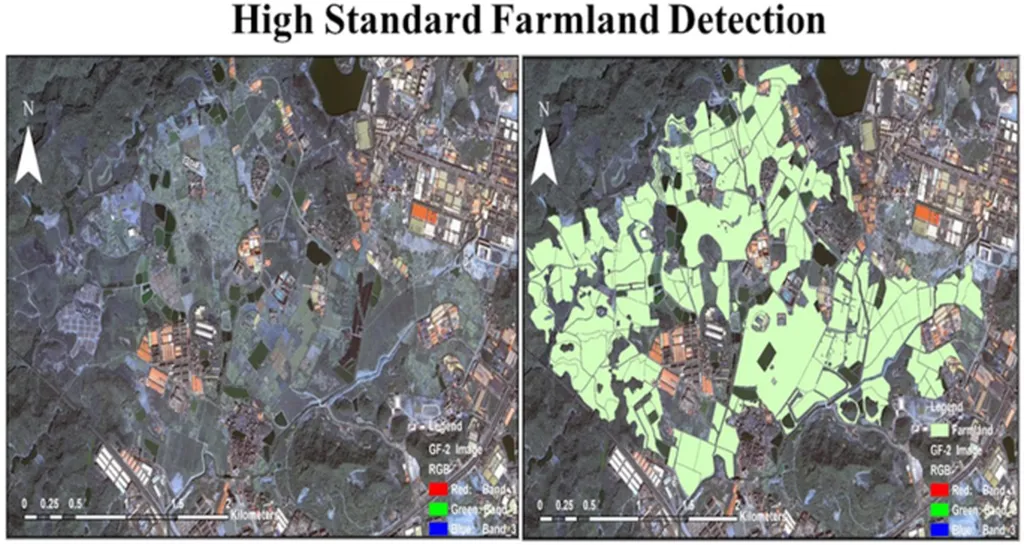In the ever-evolving landscape of agricultural technology, a groundbreaking study led by Weiqi Ren from the Institutions of Electrical and Information at Northeast Agricultural University in Harbin, China, is set to revolutionize how we monitor and detect changes in agricultural land use. Published in the esteemed journal *Remote Sensing* (translated to English as “Remote Sensing”), this research introduces a novel framework that promises to enhance the accuracy and scalability of detecting subtle transitions in farmland, a critical need for the energy sector and beyond.
The study addresses a longstanding challenge in the field of remote sensing: the accurate detection of agricultural land-use changes over time. Traditional methods often struggle with cross-temporal interference, multi-scale feature modeling limitations, and poor scalability over large areas. To tackle these issues, Ren and his team developed the Semantic Change Detection (SCD) with Single-Head Dual-Attention Vision Transformer (SHDAViT) and Multidimensional Collaborative Attention (MCA) Block-Based Network (SMBNet).
The SHDAViT module is a game-changer in local-global feature aggregation. It employs a single-head self-attention mechanism combined with channel–spatial dual attention, allowing for more precise feature extraction from bi-temporal imagery. “This mechanism enhances our ability to capture both local and global features, which is crucial for identifying subtle changes in farmland,” explains Ren.
Complementing SHDAViT is the MCA module, designed to mitigate cross-temporal style discrepancies. By modeling cross-dimensional feature interactions, MCA fuses bi-temporal information to highlight true change regions and suppress noise. “The MCA module ensures that we are not just detecting changes but accurately identifying the most relevant ones,” Ren adds.
The efficacy of SMBNet was rigorously tested on the newly developed AgriCD dataset and the JL1 benchmark. The results were impressive, with SMBNet outperforming five mainstream methods, achieving state-of-the-art F1 scores of 91.18% on the AgriCD dataset and 86.44% on the JL1 benchmark. These scores demonstrate superior accuracy in detecting subtle farmland transitions, even in the face of label imbalance and environmental variations.
The implications of this research are profound, particularly for the energy sector. Accurate and scalable detection of agricultural land-use changes is crucial for monitoring bioenergy crop rotations, assessing the impact of renewable energy projects on farmland, and optimizing land use for sustainable energy production. “This technology provides a robust solution for agricultural monitoring, which is essential for informed decision-making in the energy sector,” Ren notes.
Looking ahead, the framework developed by Ren and his team offers a promising path forward for future developments in the field. Its robustness and accuracy pave the way for more sophisticated applications in agricultural monitoring, environmental management, and beyond. As the world continues to grapple with the challenges of climate change and sustainable development, technologies like SMBNet will play a pivotal role in shaping a more resilient and efficient future.
In the words of Ren, “Our goal is to provide tools that not only enhance our understanding of agricultural changes but also support the broader goals of sustainability and energy efficiency.” With the publication of this research in *Remote Sensing*, the journey towards these goals has taken a significant step forward.

